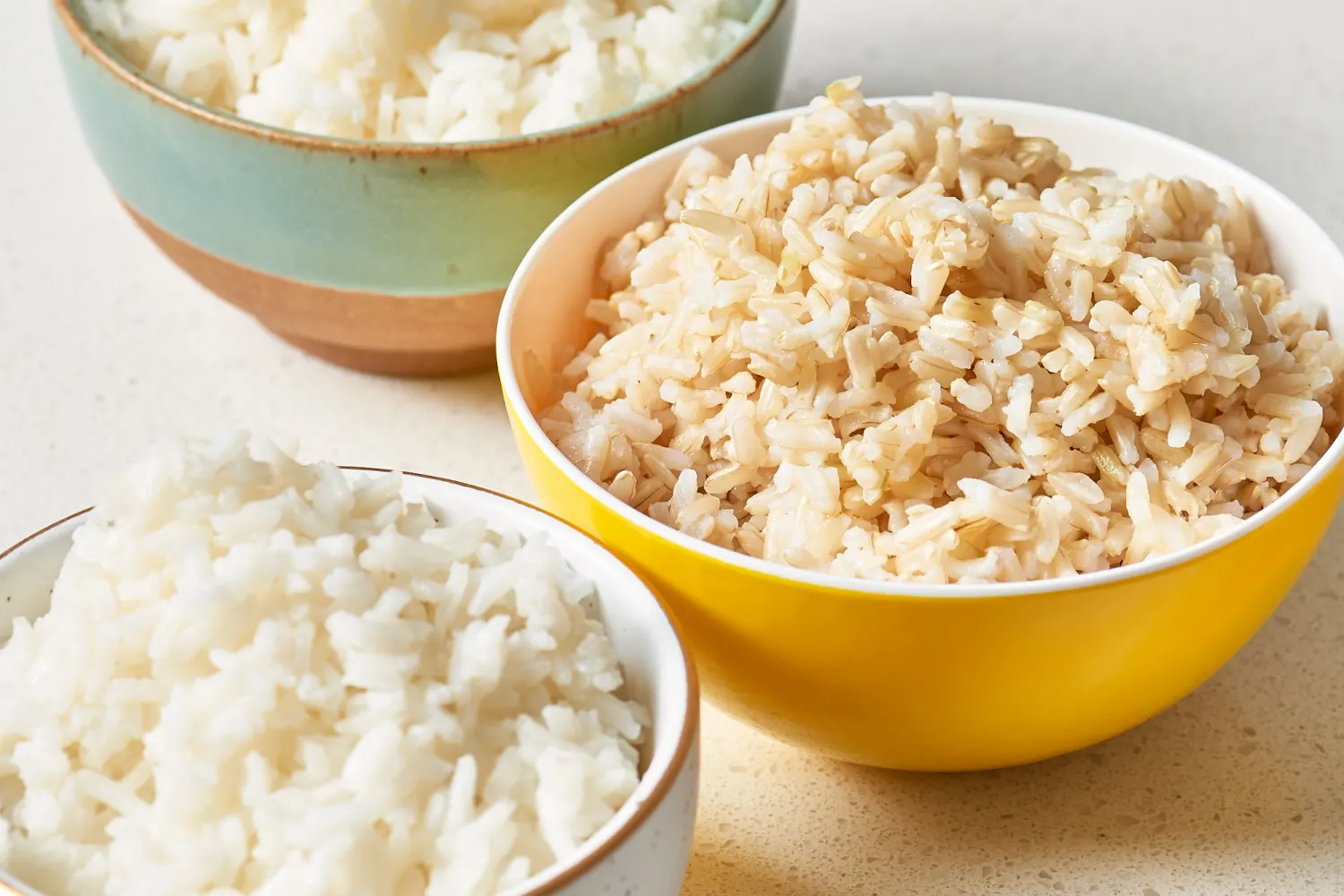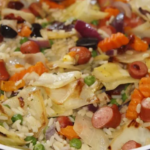Rice is one of the quintessential companions in our daily diet because it is super versatile and goes well with everything. Despite the fact that it is something that many of us eat between 2 and 3 times a week, it happens that on many occasions we do not know how to prepare it and it tends to be caked, doughy, with a lumpy and unappetizing texture.
 Many are the people who consider that for rice you have to have a hand, but in this article we will tell you that it is not necessary to be an expert chef to get first class rice. For this we will teach you how to make loose rice and the tricks that you should not miss. Read on to find out why your rice woos not stick together and what to do when your rice gets sticky or chunky.
Many are the people who consider that for rice you have to have a hand, but in this article we will tell you that it is not necessary to be an expert chef to get first class rice. For this we will teach you how to make loose rice and the tricks that you should not miss. Read on to find out why your rice woos not stick together and what to do when your rice gets sticky or chunky.
Why does rice cake?
This is one of the most asked questions, since for many it is extremely difficult to get a middle ground in rice. It has happened to all of us that the rice is extremely hard or so caked that it looks like puree. Well, the answer to the question why the rice is not loose can be one of these main reasons:
1. Too much movement
One of the most common mistakes is moving the rice. If you do it at the right temperature and in a non-stick pot we can assure you that it will not stick and it will be unnecessary to remove it. Keep in mind that mixing the rice will cause it to lose its starch it contains and, consequently, a doughy texture will be generated, ruining the preparation. It is enough to move it a couple of times after adding the water and then cover.
2. Inadequate amount of water
The excess of water can be the cause of pasty rice because the grains are overhydrated. This is also greatly affected by the type of rice chosen, as Arborio absorbs much more than a long-grain, everyday rice. In most cases, the measure is 2 cups of water for 1 cup of rice, although depending on the result we want to obtain, it may be necessary to add more liquid. Try to maintain this measure and you will see that the result will be excellent.
On the other hand, adding less water than indicated also explains why the rice is not loose. For this reason it is crucial to adapt the amount of water to the type of rice.
3. Long cooking time
Although it seems obvious, it is essential to review the instructions on each package to maintain an adequate cooking time. With rice, especially, this point is crucial, since if we cook it too much, this will undoubtedly be the reason why the rice becomes soggy. In general terms, for the rice to be perfect, it usually takes between 10 and 18 minutes, the ideal being about 12. Of course, the final time will also depend on the type of kitchen we have.
Quantity of rice and water per person
If you suspect that the reason why the rice is not loose is the proportion of water and rice used, we share some indicative amounts that usually work. In general, 100 grams of rice per person is usually enough, although the final amount will depend entirely on the type of dish we are cooking. For example, if we are preparing a rice recipe to accompany, we can choose to reduce the amount to 50-60 grams, while if the rice is the protagonist because we are making paella, we will have to keep the 100 or even a little more in case someone wants to repeat.
Now, how do we calculate the amount of rice in glasses? Normally, in a normal glass (about 200 g capacity) there is enough for two people. Thus, if we are only going to cook for one, we will use half a glass of rice, while if we are going to cook for three we will use a glass and a half. We will use the same glass to calculate the amount of water, which depending on the result is one or the other:
- Loose dry rice: 2 glasses of water for each glass of rice.
- Sticky loose rice: 3 glasses of water for each glass of rice.
- Loose broth rice: 4-5 glasses of water for each glass of rice.
Tricks to make loose rice come out
In addition to the previous tips on the proportion of rice and water, we can follow the following tricks so that the rice comes out loose:
- Wash the rice to remove excess starch, this will prevent the water from being saturated during cooking and therefore the rice will not be sticky. Wash it 3-4 times or until the water runs clear and not white.
- Sauté the rice before adding the water. Apart from being an excellent technique for loose rice, it is ideal for obtaining rice with much more flavor. Add a splash of oil to the pot and fry the rice grains for a couple of minutes before pouring in the water; this process helps the grains to seal, separate and not clumps together.
- If your intention is to prepare white rice to accompany it and you have wondered why the rice is pasty, it is surely because you have not put this trick into practice. After cooked, wash it with cold water to stop the cooking. This will help slow down its cooking and separate the grains so that it is loose and manageable. With the help of a strainer, pass the rice under the tap and you will see the difference.
- Another trick widely used by grandmothers is to add a splash of lemon juice or vinegar during cooking. They say that it does not change the flavor at all and that it is really functional to avoid caking of the rice.
How to fix sticky rice?
Now that you know all the reasons why rice is chewy, you will not fail next time and you will know how to make cooked rice, chicken rice, vegetable rice, or any other rice recipe you like. However, if the rice has already passed and you do not know what to do, here is a trick with which you will know how to fix masacotudo rice easily.
The trick is to place the rice grains in a strainer and wash them under the tap to get all the starch out. When you have done it, put them in a pan and cook them for 5 minutes so that the starch and water finish evaporating. It will be loose and delicious!



